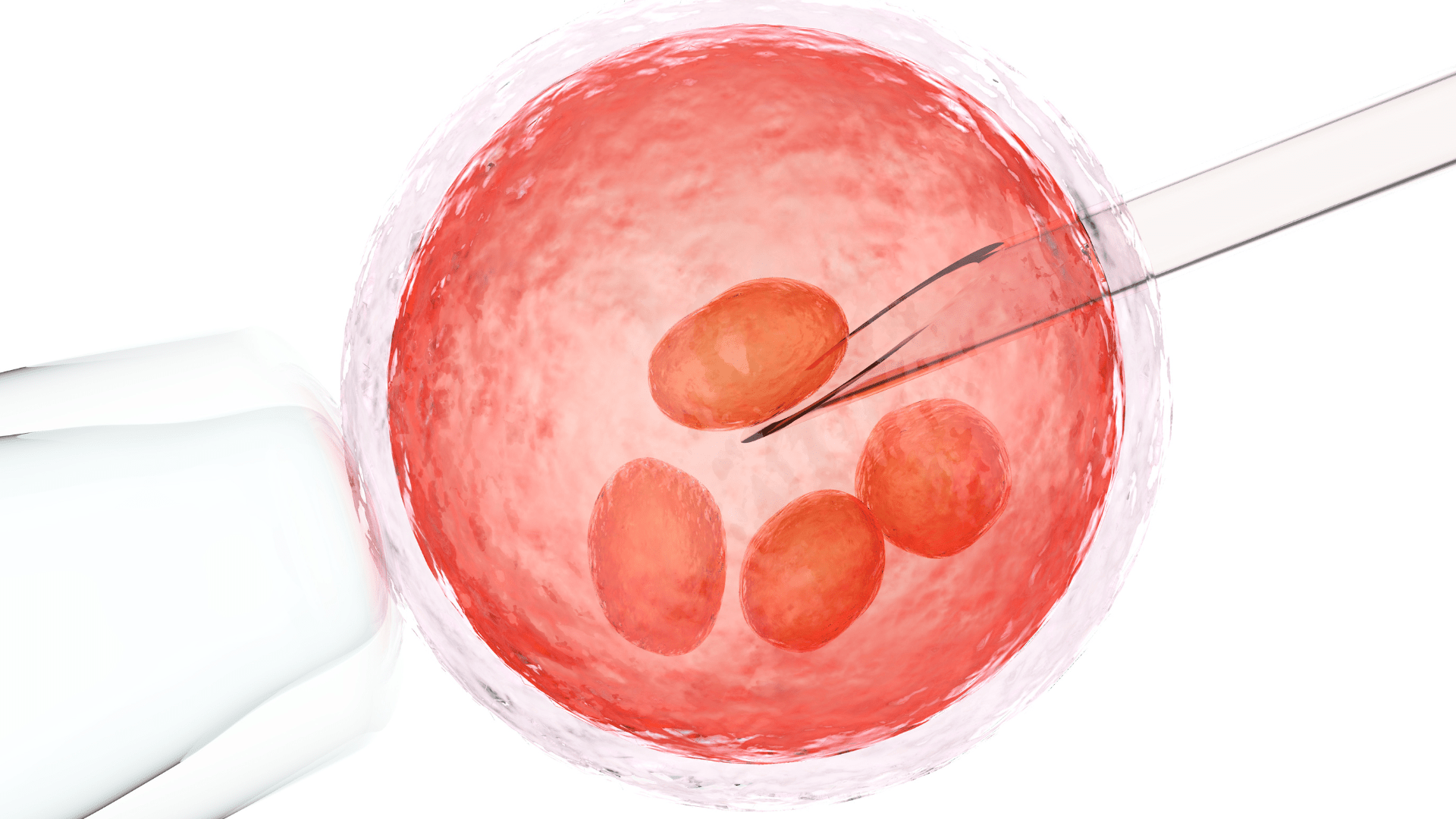Following the advent of in vitro fertilization, couples affected by infertility now have the option of having children. The development of in vitro fertilization (IVF) is an innovative method that offers hope. This article will take you step-by-step through the IVF process and explain how this cutting-edge fertility treatment can assist couples in realizing their desire to become parents.
-
First consultation and fertility evaluation
An initial consultation with a fertility doctor is the first stage in the IVF process. The couple’s medical background, any prior fertility treatments (if any), and any underlying issues are discussed at this discussion. To find potential obstacles to conception, the fertility specialist may advise a thorough fertility assessment that includes blood tests, semen analysis, and imaging tests.

-
Ovarian Stimulation
Once the couple is deemed suitable candidates for IVF, the woman undergoes ovarian stimulation. This involves the administration of fertility medications, typically in the form of injectables, to stimulate the ovaries to produce multiple mature eggs. Regular monitoring through ultrasound and blood tests allows the fertility team to adjust medication dosages for optimal follicular growth.
-
Egg Retrieval
When the ultrasound reveals that the eggs are mature, a minor surgical procedure called egg retrieval is performed. Under sedation, the fertility specialist uses a thin ultrasound-guided needle to aspirate the follicles and collect the eggs. This process is quick and generally well-tolerated, with minimal discomfort for the patient.
-
Sperm Collection and Preparation
On the same day as the egg retrieval, the male partner provides a semen sample. If the male partner has fertility issues, there are various techniques available to assist in sperm retrieval, such as surgical sperm retrieval (TESA, MESA). The collected semen is then processed in the laboratory to isolate the healthiest and most motile sperm for fertilization.
-
Fertilization – Insemination or ICSI
There are two common methods of fertilization used in IVF: conventional insemination and Intracytoplasmic Sperm Injection (ICSI). In conventional insemination, the collected sperm is combined with the retrieved eggs in a culture dish, allowing natural fertilization to occur. On the other hand, ICSI involves the injection of a single sperm directly into each mature egg using a fine needle. ICSI is typically recommended in cases where there are concerns about the sperm’s quality or previous fertilization failures.
-
Embryo Development and Monitoring
Following fertilization, the embryos are cultured in a laboratory under controlled conditions. The fertility specialists monitor their development closely, observing the number of cells and the rate of growth. Typically, the embryos are cultured for three to five days until they reach the blastocyst stage, where they consist of around 100 cells.
-
Embryo Transfer
The embryo transfer is a crucial step in the IVF process. It involves the placement of one or more viable embryos into the woman’s uterus. The number of embryos transferred is determined based on various factors, including the woman’s age, embryo quality, and previous IVF cycles. The procedure is performed with the guidance of ultrasound imaging, and it is usually painless and minimally invasive.
-
Progesterone Support and the Two-Week Wait
After the embryo transfer, the woman receives hormonal support in the form of progesterone to create a favorable environment for embryo implantation. Following the transfer, the couple enters the anxious two-week wait period, during which they must patiently wait for signs of pregnancy.
Symptoms for IVF Insertion
There are various factors that can lead to infertility, while certain symptoms may indicate the need for IVF insertion. In this article, we will explore some common symptoms that could suggest the necessity of IVF, offering insights into when couples should consider this advanced fertility treatment.

-
Irregular or Absent Menstrual Cycles
Irregular or absent menstrual cycles can be an indication of underlying fertility issues. Conditions such as polycystic ovary syndrome (PCOS) or hormonal imbalances may disrupt regular ovulation, making it difficult for a woman to conceive naturally. If you consistently experience irregular or absent periods, it may be a sign that IVF insertion could be beneficial in helping you achieve pregnancy.
-
Blocked or Damaged Fallopian Tubes
Blocked or damaged fallopian tubes can prevent the sperm from reaching the egg or the fertilized egg from reaching the uterus. This can be caused by conditions like pelvic inflammatory disease, endometriosis, or previous surgeries. If you have been diagnosed with blocked or damaged fallopian tubes, IVF can bypass this obstruction by directly placing the fertilized embryo into the uterus, increasing the chances of successful implantation.
-
Low Sperm Count or Poor Sperm Quality
Male factor infertility, characterized by low sperm count or poor sperm quality, can significantly impact a couple’s ability to conceive naturally. If semen analysis reveals abnormalities in sperm parameters, such as low sperm count, reduced motility, or abnormal morphology, IVF insertion may be recommended. Through techniques like Intracytoplasmic Sperm Injection (ICSI), which involves directly injecting a single sperm into an egg, IVF can overcome sperm-related infertility challenges.
-
Advanced Maternal Age
As women age, the quantity and quality of their eggs naturally decline. Advanced maternal age, typically defined as 35 years or older, can decrease the chances of successful conception. IVF can be a viable option for older women who are trying to conceive, as it allows for the selection of the healthiest and most viable embryos for transfer, increasing the likelihood of achieving a healthy pregnancy.
-
Unexplained Infertility
In some cases, couples may experience infertility without any identifiable cause. Unexplained infertility can be frustrating and disheartening. If you have undergone thorough fertility evaluations, including assessments of hormone levels, tubal patency, and semen analysis, without finding a clear reason for your infertility, IVF may offer a solution. IVF provides a controlled environment in the laboratory, where fertilization and embryo development can be closely monitored, increasing the chances of successful conception.
-
Previous Unsuccessful Fertility Treatments
If you have already undergone other fertility treatments, such as intrauterine insemination (IUI) or ovulation induction, without achieving pregnancy, IVF insertion may be the next step. IVF offers a higher success rate compared to other treatments and allows for more control over the fertilization and embryo development process, increasing the chances of a successful pregnancy.
Risk of IVF Insertion
-
Ovarian Hyperstimulation Syndrome (OHSS)
One of the primary risks associated with IVF insertion is ovarian hyperstimulation syndrome (OHSS). This condition occurs when the ovaries overreact to fertility medications, leading to swollen and painful ovaries. Symptoms of OHSS may include abdominal bloating, nausea, vomiting, and shortness of breath. While most cases of OHSS are mild, severe cases can result in fluid accumulation in the abdomen or chest, blood clots, or kidney problems. Close monitoring by your fertility specialist and following their instructions regarding medication dosage can help minimize the risk of OHSS.
-
Multiple Pregnancies
IVF insertion can increase the chances of multiple pregnancies, such as twins or higher-order multiples. While some couples may view this as a desired outcome, multiple pregnancies carry higher risks compared to singleton pregnancies. Complications associated with multiple pregnancies include preterm labor, low birth weight, and a higher likelihood of requiring a cesarean section. Your fertility specialist will work with you to determine the appropriate number of embryos to transfer, considering your age, medical history, and other relevant factors, to minimize the risk of multiple pregnancies.

-
Ectopic Pregnancy
Ectopic pregnancy is a rare but serious risk associated with IVF insertion. It occurs when a fertilized egg implants outside of the uterus, typically in the fallopian tubes. Ectopic pregnancies can be life-threatening if not detected and treated early. Symptoms may include pelvic pain, vaginal bleeding, and shoulder pain. It is crucial to seek immediate medical attention if you experience these symptoms after IVF insertion, as early diagnosis and intervention are essential.
-
Infection and Bleeding
During the egg retrieval process, there is a small risk of infection or bleeding. The procedure is typically performed under sterile conditions, minimizing the risk of infection. However, in rare cases, infections can occur. Similarly, bleeding can occur during or after the procedure, but it is usually minimal and resolves on its own. Your fertility specialist will closely monitor you during the procedure and provide instructions on any signs of infection or excessive bleeding to watch out for.
-
Emotional and Psychological Impact
While not physical risks, it is important to acknowledge the emotional and psychological impact of IVF insertion. The fertility journey can be emotionally challenging, with feelings of stress, disappointment, and anxiety. It is essential to seek support from loved ones, counseling services, or support groups to navigate the emotional aspects of the process. Open communication with your partner and healthcare team can also help manage the psychological impact of IVF insertion.
Conclusion
IVF insertion offers a path to parenthood for those struggling with blocked fallopian tubes, low sperm count or poor sperm quality, advanced maternal age, unexplained infertility, or previous unsuccessful fertility treatments. It involves ovarian stimulation, egg retrieval, fertilization, embryo development, and the transfer of one or more embryos into the woman’s uterus.
While success rates vary based on individual factors, understanding the risks and potential side effects is essential. Working closely with a fertility specialist, maintaining a healthy lifestyle, and following prescribed protocols can help optimize the chances of IVF success. Remember that each individual’s journey is unique, and seeking support from loved ones or professional counseling services can provide emotional strength throughout the process.
Consultation with a fertility specialist is crucial for personalized guidance and to development of a tailored treatment plan that suits individual needs. With dedication, support, and advancements in reproductive technology, IVF has the potential to transform dreams into reality.
Frequently Asked Questions About In Vitro Fertilization (IVF)
- What is IVF Insertion?
IVF insertion is a fertility treatment that involves combining eggs and sperm in a laboratory setting to facilitate fertilization. It begins with ovarian stimulation to produce multiple mature eggs, followed by egg retrieval and sperm collection. Fertilization can occur through either conventional insemination or Intracytoplasmic Sperm Injection (ICSI). The resulting embryos are then cultured in a laboratory before being transferred into the woman’s uterus, with the goal of achieving pregnancy. - Who is a Candidate for IVF Insertion?
IVF insertion is recommended for couples facing various fertility challenges, such as blocked fallopian tubes, low sperm count or poor sperm quality, advanced maternal age, unexplained infertility, or previous unsuccessful fertility treatments. However, the final decision on whether to pursue IVF depends on a thorough evaluation by a fertility specialist who will consider individual circumstances and medical history. - What Does the IVF Process Involve?
The IVF process includes several key steps. It starts with ovarian stimulation through fertility medications to promote the growth and development of multiple eggs. Once the eggs are mature, they are retrieved using a minimally invasive procedure. The collected eggs are then fertilized with sperm in the laboratory. After monitoring their development, one or more embryos are transferred into the woman’s uterus. Progesterone support is provided to optimize the chances of successful implantation and pregnancy. - What Are the Success Rates of IVF Insertion?
IVF success rates vary based on multiple factors, including the woman’s age, the quality of the embryos, and underlying infertility factors. Generally, younger women have higher success rates than those who are older. It’s essential to discuss success rates with your fertility specialist, as they can provide personalized insights based on your specific circumstances. - Are There Any Risks or Side Effects Associated with IVF Insertion?
As with any medical procedure, there are potential risks and side effects associated with IVF insertion. These may include ovarian hyperstimulation syndrome (OHSS), multiple pregnancies (if multiple embryos are transferred), ectopic pregnancy, and a small risk of infection or bleeding during the retrieval process. However, the risk of complications is typically low, and your fertility specialist will take precautions to minimize them - How Long Does the IVF Process Take?
The IVF process can vary in duration from person to person, but on average, it takes around four to six weeks to complete one full cycle. This timeline includes ovarian stimulation, egg retrieval, fertilization, embryo development, and the embryo transfer. It’s important to note that the actual duration may be influenced by individual factors and any additional treatments or procedures required. - What Can I Do to Improve My Chances of IVF Success?
While there are no guarantees, there are steps you can take to optimize your chances of IVF success. These include maintaining a healthy lifestyle, following the prescribed medications and treatment protocols, attending all appointments and monitoring sessions, managing stress levels, and seeking support from loved ones or counseling services throughout the process.





2 Responses
A great article